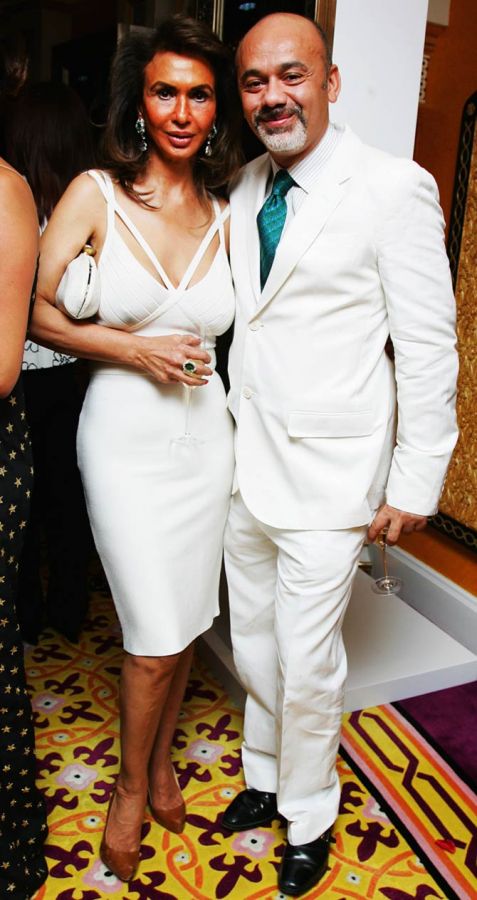
Laughter was a component of Parmeshar Godrej's large-hearted Punjabi spirit, recalls Sunil Sethi.

I once had to record a half-hour television show with Richard Gere at the height of his crusade to mobilise money and public opinion for the AIDS campaign in India.
After it was over, I asked why he and the Bill and Melinda Gates Foundation had chosen Parmeshwar Godrej as their key partner.
His creased, handsome, bespectacled face broke into a wide smile. "That's easy," said the unusually affable and eloquent actor, also a devout Buddhist, ticking off the reasons on his fingers. "She's a dynamo and a doer. She has an amazing ability to connect with people and bring them together. She comes up with ideas and offers solutions."
"And," he added, as if the postscript merited an important but final seal of approval, "she has a light touch... her sense of humour makes any collaboration a pleasure."
It is an attribute of Parmeshwar Godrej that many remember the best.
Laughter was a component of her large-hearted Punjabi spirit; coupled with shrewd common sense, it swiftly deflated pomposity and notions of folie de grandeur.
My enduring first impression vividly captures her essence. It was at a dinner given many years ago by her brother Harinder Madher and his Russian-Canadian wife Tanya on, of all places, the rooftop of the Samrat, an odd adjunct to the old government-owned Ashok Hotel.
And there, among the drifting flotsam of the capital's social set, with a smattering of diplomats, bureaucrats and politicians thrown in, was the glamorous Parmeshwar leaning against the parapet wall in one of her slinky figure-hugging dresses, like a slightly angled lighthouse beam.
Her head thrown back, she was laughing uproariously, both attentively listening and contributing to some deliciously juicy tale. Not quite the conventional image of a tycoon's wife.
Evocations of the larger-than-life Mrs Godrej in the days following her death on October 10 have dwelt on her status as a style icon, her legendary entertaining of Gatsby-like proportions, her shouldering of noble causes and unwavering support of her husband, Adi Godrej, chairman of the Godrej group, and his family fortune.
But few have pointed out how a young woman, the daughter of a Sikh army officer from small-town Patiala, conservatively brought up to observe upstanding soldierly virtues, transformed into a trendsetting figure -- running independent ventures in fashion and interior design, energetically fundraising for AIDS awareness and hobnobbing with the internationally rich and famous.
Her paradox was that with her finger so firmly placed on the pulse of the capricious worlds of fashion, film, corporate affairs and party-giving, she never went out of fashion.
I once asked how she managed so many irons in the fire. The flicker of smile behind her bronzed carapace became a roguish grin. "I enjoy change. The newness of things keeps me going," she said. "It keeps me ahead of the game."
Deconstructed in business terms, this could mean diversifying your risk portfolio, exercising strategic image management and being wide open to new ideas and influences.
You must be compelling enough to cultivate friendships with the likes of Imran Khan, Amartya Sen, Salman Rushdie and Gere, and a layered network of friends and associates between.
She had enemies and rivals as well but she handled them with the same suave assurance.
Journalist Coomi Kapoor was in her class in Mumbai's Fort Convent in 1962. "She was warm-hearted, quite glamorous even then and had a lovely smile. I remember our Hindi teacher being charmed by her," she recalls.
Parmeshwar's years as an Air India stewardess were brief. One of her cohorts, the daughter of a senior defence officer, who joined the airline later but met her much after, describes the age of Air India's golden girls. "The airline's top management was involved in the selection process. We were chosen not for our looks alone but for overall personality and careful background screening."
Competition to get in was stiff. With limited opportunities for out-of-college women, it was a chance to see the world, earn a generous salary and be posted abroad.
Asked to pinpoint the most noticeable change she observed in her former colleague's growth trajectory, she says: "Her supreme confidence. It was remarkable how Parmeshwar developed her own identity and grew into multiple roles, not merely as the spouse of a leading industrialist."

One of her old friends and allies is the highly-networked entrepreneur Bina Ramani. Like Parmeshwar she, too, is Sikh by birth and had a strict conformist upbringing.
Remembering their decades-old friendship, Ramani said, "I first met Param, a soft-spoken shy girl in a white salwar-kameez, at Adi's Juhu shack in 1966. She was working for Air India but there was an obvious chemistry between them. Her homes on Malabar Hill and Juhu were always open to me. When I introduced her to Richard Gere and the AIDS campaign, she said, 'Bina, let's work on this carefully. The government is doing nothing. Let's ramp it up internationally but I want the scale of the Indian crisis to be absolutely central'."
Ramani gives a touching instance of the deeply emotional private person behind the shining public persona.
The death of her sister Ishwar, to whom she was close, devastated her. "When Ishwar was very ill, I went to spend a quiet evening with her. We mourned together, seated on the floor, our heads covered. She wouldn't eat. I persuaded her saying it was Guru da langar. And so we ate a hearty Punjabi thaal. Deep down some of her family allegiances and traits of discipline and steely determination were of a Jat Sikh fauji's daughter."
Her tremendous self-assurance stemmed from never losing sight of her roots, and she easily slipped into Punjabi with fellow speakers. "Ah, my Amritsari friend," she would tease and corner me for a quick private exchange of colourful jibes.
On one such occasion we found ourselves cheek by jowl at one of those lamentably mixed-up film parties. She had arrived fashionably late in her signature beret and well-cut jacket, but now a well-known but thoroughly inebriated film star was annoying her.
"Oops," she said, as she flicked him off like a mosquito with practised ease. But then my ear caught a whisper through her smiling rictus: "Khota hai, bilkul khota (He's an ass, a total ass)!"
I laughed out loud, saying that I hadn't heard that phrase, nor such a sharp dismissal, since my grandmother's time.
Fixing me with a gimlet eye, she shot back, "Naani yaad aagayi na (Of cours,e you will remember your grandmother)," before passing on to the next guest.
Parmeshwar was an amazingly alive, multi-faceted but incurably jolly Punjabi girl. Gere was not the only one to find a kindred spirit.











